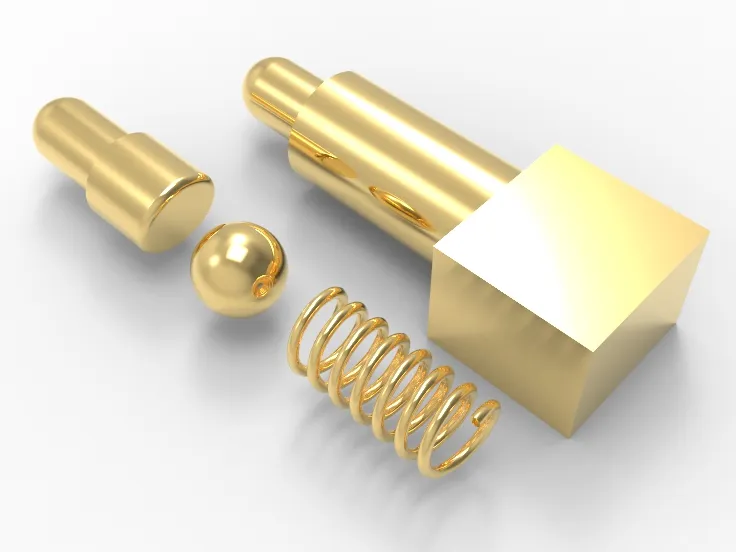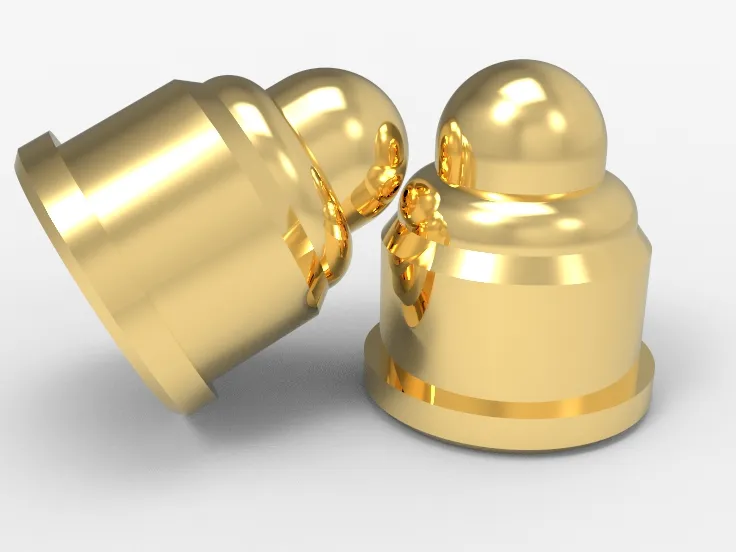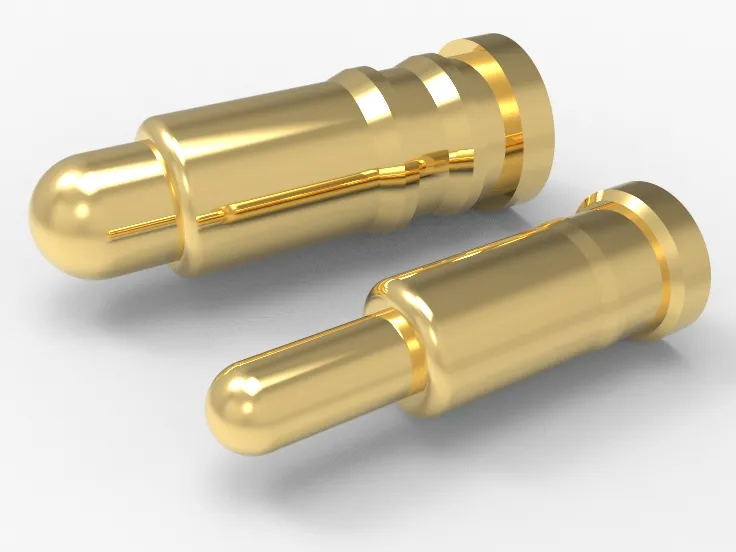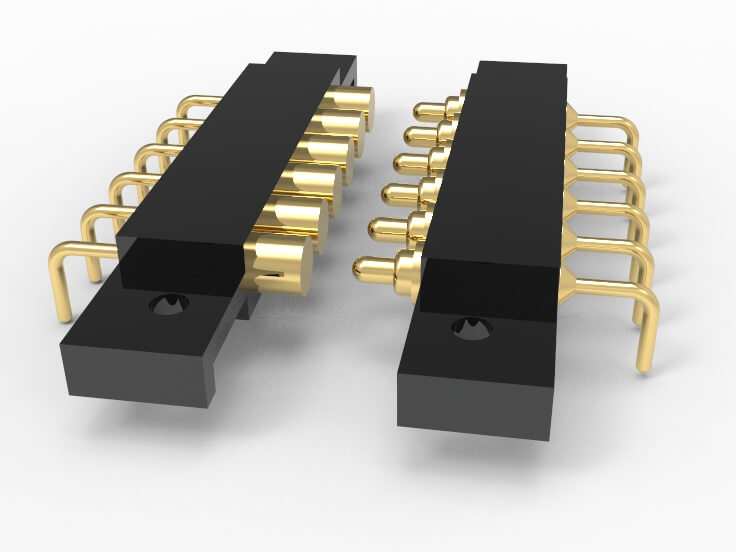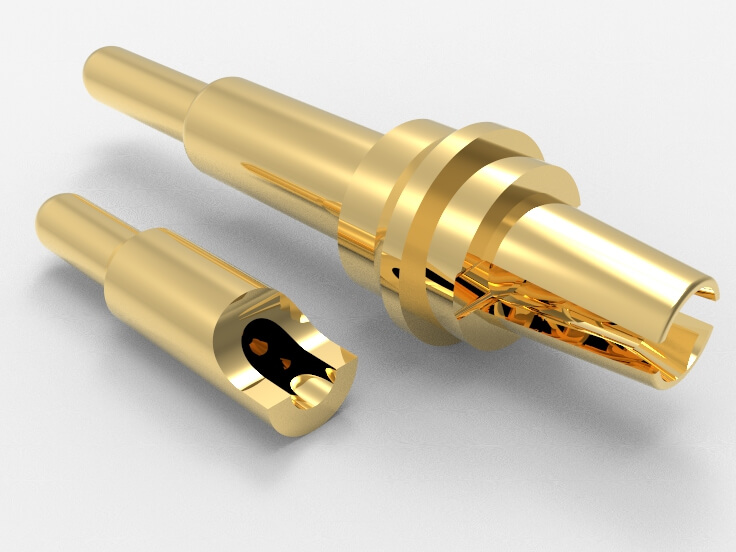What Is Current Rating? Know How Pogo Pin Rated Current Affect Your Product’s Performance | Reliability. Essential insights for your designs
1. Introduction, What Is Current Rating?
In modern electronics, Pogo Pins play a crucial role as key connectors. Many people overlook the importance of their current rating when choosing Pogo Pins. Did you know that a Pogo Pin’s current rating not only affects your product’s electrical performance but also impacts the device’s overall reliability and lifespan? From smartphones to high-end medical devices, understanding how the current rating of Pogo Pins influences your design can help optimize stability and durability.
In this blog, we’ll dive into the current rating parameters of Pogo Pins, reveal their key impacts on electronic design, and provide practical design tips and advice. Let’s uncover the mysteries of Pogo Pins to ensure your electronic products achieve peak performance and reliability.
2. Basics of Pogo Pins, What Is Current Rating?
Pogo Pins: The Invisible Heroes of Electrical Connections
- Pogo Pins are vital components in modern electronics, ensuring stable electrical connections. Their core feature is an internal spring mechanism that adjusts automatically when connecting to a circuit board, maintaining good contact. Whether for mobile devices, laptops, or sensors, Pogo Pins are indispensable “invisible heroes” in electronic design.
- Their compact design reduces wear and tear during insertion and removal and effectively prevents electrical interference, ensuring stable operation for high-tech products.
3. Understanding What is Current Rating of Pogo Pins?
3.1 Design Philosophy: Precision Flow Control
- Pogo Pin current ratings are designed for precise flow control. By optimizing contact force and material choice, they maintain stable current transfer even under heavy loads, minimizing contact resistance and heat issues.
3.2 Material Choice: High Conductivity Materials
- High-quality Pogo Pins are usually made from copper alloys or gold-plated materials. These materials provide excellent conductivity and reduce energy loss during current transfer, enhancing overall performance.
3.3 Manufacturing Process: Precision Craftsmanship
- The manufacturing of Pogo Pins involves micron-level processing and soldering techniques. High-precision production ensures each Pogo Pin operates stably within its rated current range, reducing failure rates.
3.4 Current Rating Range: Versatile Applications
- Pogo Pins come in various current ratings, from microamps to 1,200 amps. You can use these in all sorts of gadgets, whether they’re tiny sensors or huge circuit boards.
3.5 Thermal Management: Heat Dissipation Design
- For high-current applications, effective heat dissipation is crucial to prevent overheating and performance issues. Common methods include adding heat sinks and improving the heat dissipation efficiency of the contact interface.
3.6 Contact Resistance: A Key Performance Indicator
- Contact resistance affects the stability of a Pogo Pin’s current rating. High-quality Pogo Pins reduce contact resistance to ensure stable and reliable current transfer.
3.7 Durability: Long-Lasting Requirements
- Pogo Pins are designed for high durability to handle frequent insertions and heavy current loads. Using wear-resistant materials and optimizing spring design ensures long-term stability.
3.8 Application Examples: From Smartphones to Cars
- Pogo Pins are widely used in smartphone charging ports, medical devices, electric vehicle charging points, and more. Their current rating design ensures reliability in these demanding applications.
3.9 Performance Testing: Strict Standards
- To ensure Pogo Pins meet their current rating performance, rigorous testing is conducted, including current load testing, temperature rise testing, and durability testing, ensuring products meet industry standards.
3.10 Future Trends: Smart and High-Current
- As technology advances, Pogo Pins will likely move towards smart designs and higher current ratings. Future innovations may include integrated temperature sensors and adaptive current regulation to further enhance performance and applicability.
4. The Impact of Rated Current on Product Performance:
4.1. Contact Stability:
- Rated current affects the stability of pogo pins. Pins with a higher rated current can handle larger loads, ensuring a stable electrical connection and reducing poor contact due to excessive current.
4.2. Temperature Rise:
- High-rated current pogo pins generate more heat during operation. If the current exceeds the rated value, increased temperature can lead to material aging or solder joint failure, impacting performance.
4.3. Electrical Performance:
- Rated current impacts electrical performance. A lower rated current can decrease performance and increase contact resistance, affecting signal stability and accuracy.
4.4. Durability:
- Pogo pins with a higher rated current typically have better durability, withstanding more insertions and higher current loads, reducing wear and failure from frequent use.
4.5. Heat Dissipation:
- Rated current determines the heat dissipation ability of pogo pins. Higher rated currents require better heat dissipation designs to prevent overheating and performance degradation.
4.6. Size and Design:
- Higher rated current pogo pins may need larger sizes or special designs to handle the current load, affecting product design and component compatibility.
4.7. Cost Impact:
- Pogo pins with higher rated currents usually cost more. Product design must balance cost and performance to choose the right pins for the application.
4.8. Electromagnetic Compatibility (EMC):
- Rated current affects EMC. Higher currents can cause electromagnetic interference (EMI), requiring additional design measures to control interference and ensure proper operation.
4.9. Safety:
- Using pogo pins with a higher rated current can enhance product safety, preventing short circuits or overheating due to excessive current, thus protecting devices and users.
4.10. Application Scenarios:
- Different applications require different rated currents for pogo pins. High-power applications need pins with higher rated currents, while low-power applications can use pins with lower ratings.
5. Factors Affecting Pogo Pins’ Rated Current:
5.1 Conductor Material Secrets:
- The rated current of pogo pins relates to conductor material resistance, heat resistance, and conductivity. High-purity metal conductors can significantly boost current capacity.
5.2 Contact Design Influence:
- The design and processing of contacts affect current capacity. Precise design enhances contact stability and reduces impedance.
5.3 Surface Treatment Factors:
- Surface treatments like gold or silver plating improve corrosion resistance and reduce contact resistance, increasing rated current.
5.4 Spring Elasticity and Strength:
- Spring elasticity and strength affect pogo pin mechanical stability, impacting current capacity. Quality springs maintain stable electrical contact over time.
5.5 Operating Temperature Threats:
- High temperatures affect current capacity. Thermal expansion can cause poor contact, reducing rated current.
5.6 Contact Force Balance:
- Proper contact force ensures stable electrical connection and reduces current capacity loss due to high contact resistance.
5.7 Innovative Mechanical Design of Pogo Pins:
- Mechanical Structure of Pogo Pins, such as the length and shape of the pins, affects their current-carrying capacity. A well-designed structure minimizes resistance during current flow.
5.8 Insulation Material Durability:
- The quality and durability of the insulation material determine the safety of Pogo Pins under high current conditions. High-grade insulation prevents current leakage and short circuits.
5.9 Impact of Plugging and Unplugging:
- Frequent plugging and unplugging can wear out Pogo Pins, affecting their current-carrying ability. Wear-resistant designs extend the product’s lifespan and capacity.
5.10 Environmental Factors:
- Factors like humidity, dust, and chemical corrosion impact Pogo Pins’ performance. Good sealing and protection enhance their performance in harsh environments.
6. How to Choose the Right Pogo Pins?What Is Current Rating?
6.1 Understand Current Needs:
- Determine your device’s current requirements during normal and peak operation. This helps in choosing Pogo Pins that can handle the maximum current under various conditions.
6.2 Select the Right Rated Current:
- Ensure Pogo Pins have a rated current higher than your actual needs to prevent overheating and reduce device failure.
6.3 Consider Environmental Factors:
- Take into account how temperature and humidity affect Pogo Pins’ performance. Choose Pins that can handle specific environmental conditions.
6.4 Check Manufacturer Specifications:
- Verify the specifications and test data from manufacturers to ensure the Pins meet your needs.
6.5 Test and Validate:
- Test Pogo Pins in real applications before finalizing your choice to ensure they meet current requirements in real environments.
6.6 Plan for Future Needs:
- If your device might need more current in the future, choose Pogo Pins with a higher rating to avoid replacing them later.
6.7 Check Contact Resistance:
- Low contact resistance in Pogo Pins improves current transfer efficiency and reduces power loss.
Conclusion and Recommendations:
It’s important to grasp how much current Pogo Pins can handle to boost your product’s efficiency and dependability. Choosing the right Pins improves connection stability and durability, boosting overall product quality and market competitiveness.
Carefully evaluate current requirements in your design process to select Pogo Pins that meet actual usage needs, ensuring the best design results. Accurate selection and design will help create more competitive and marketable products.




